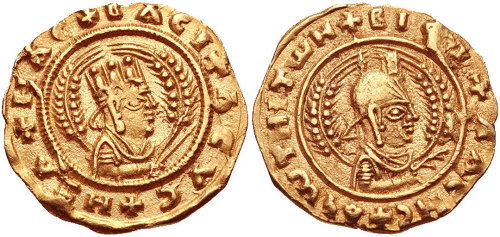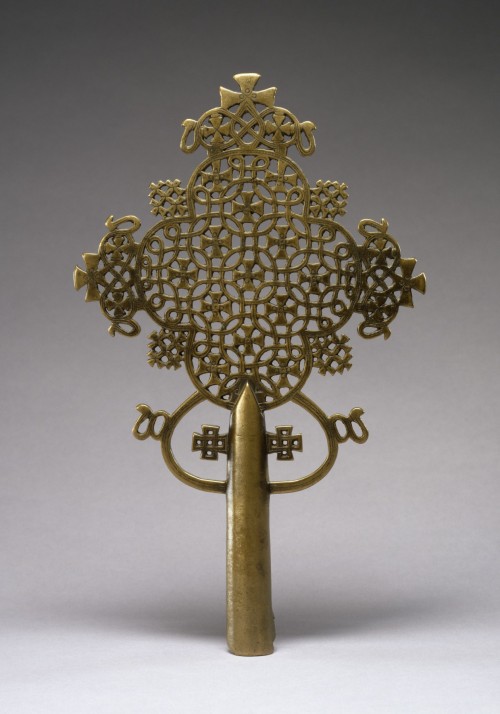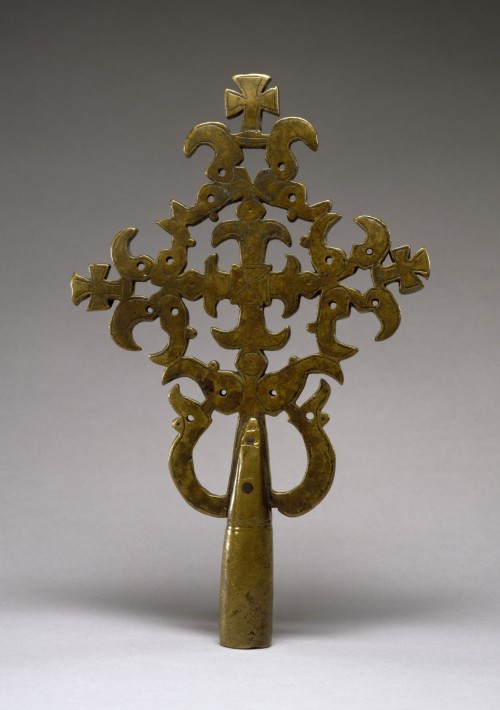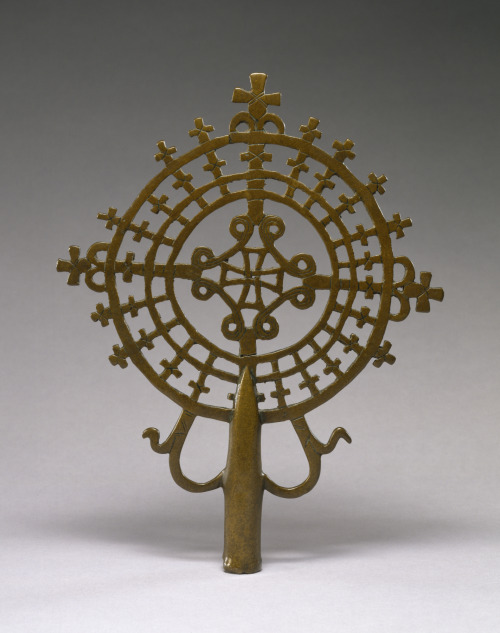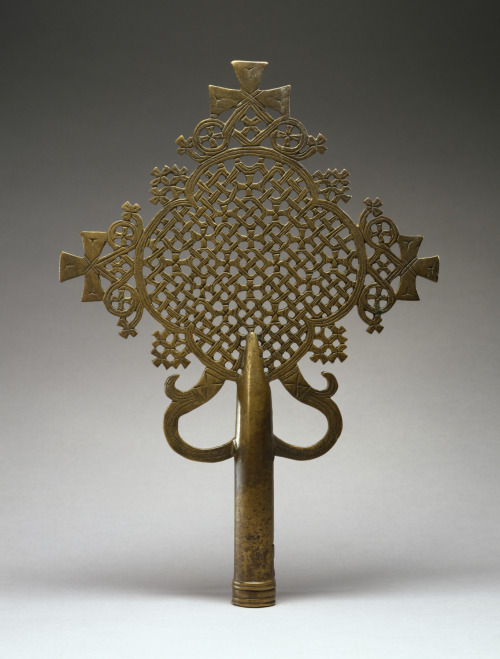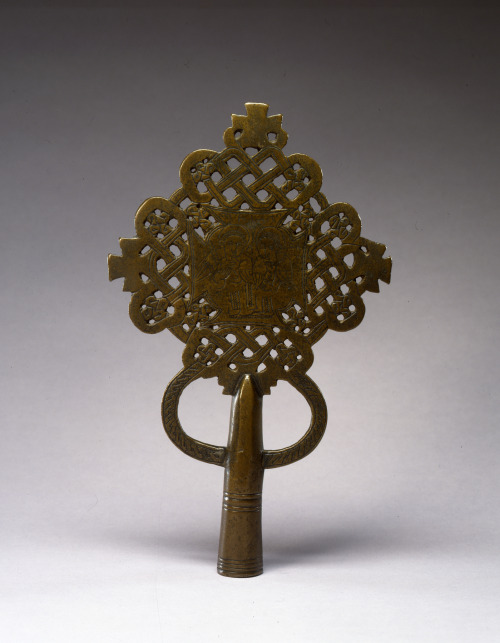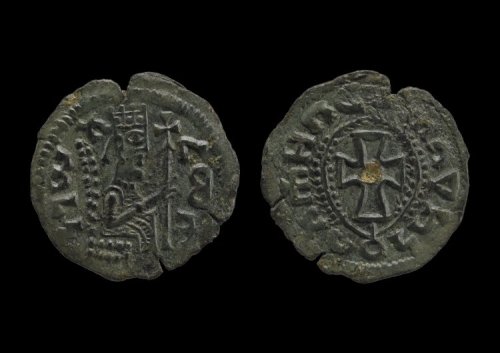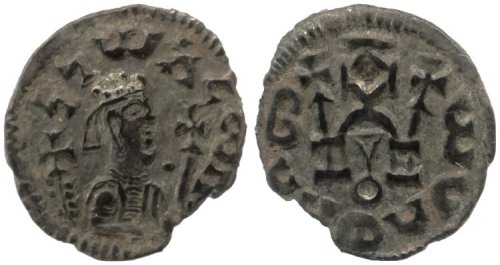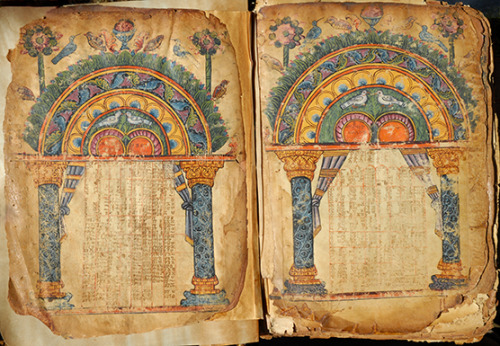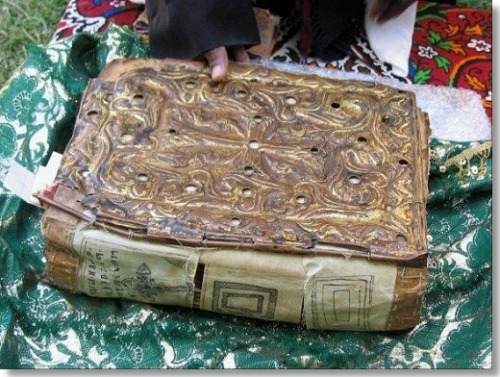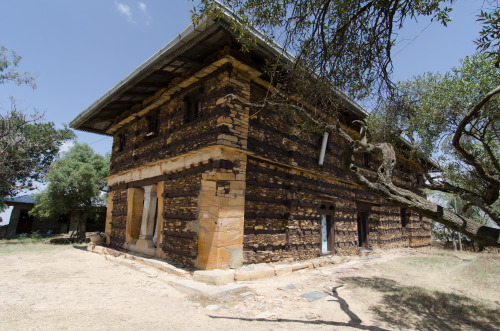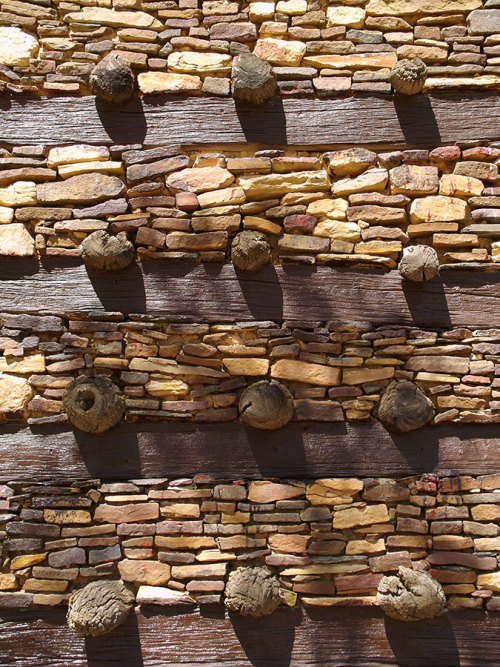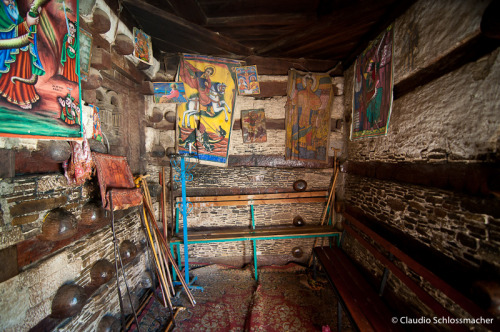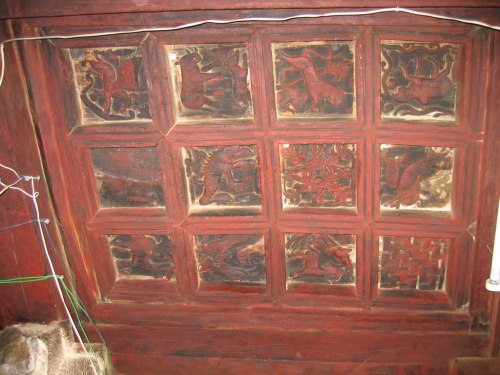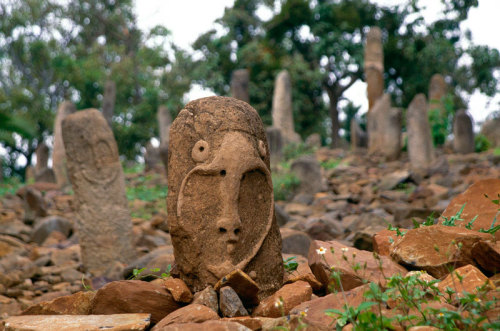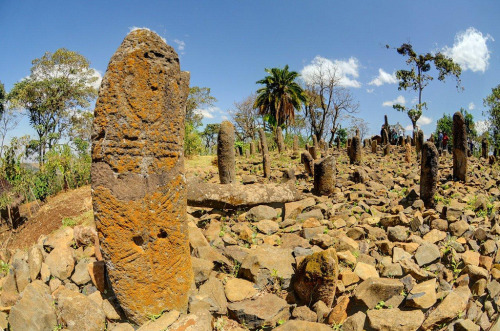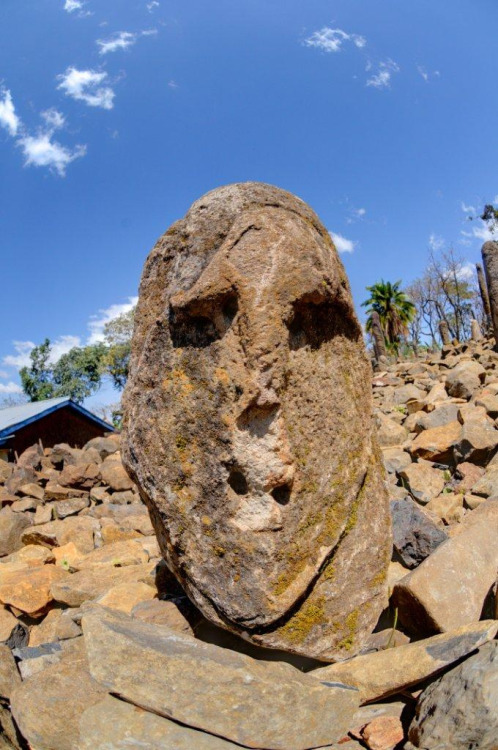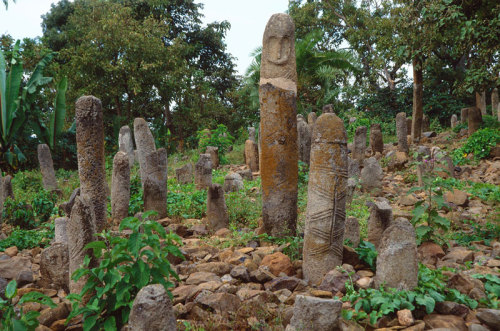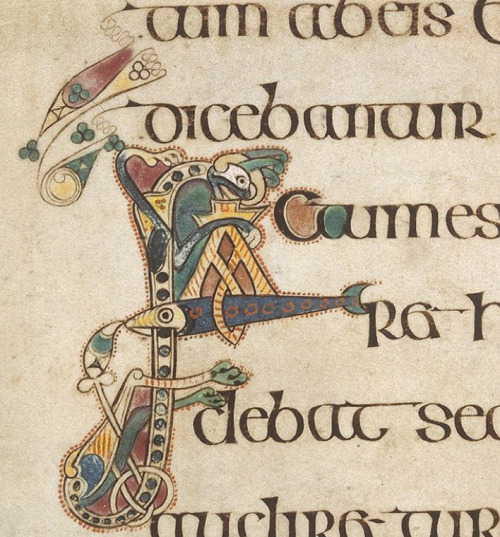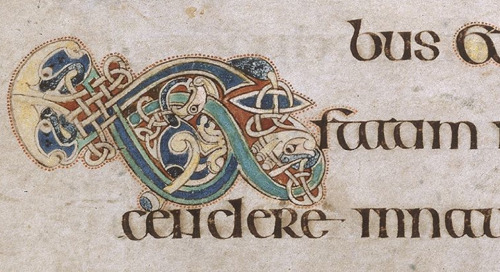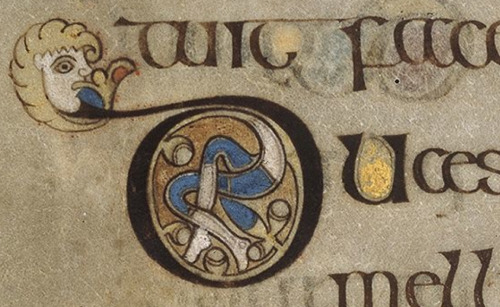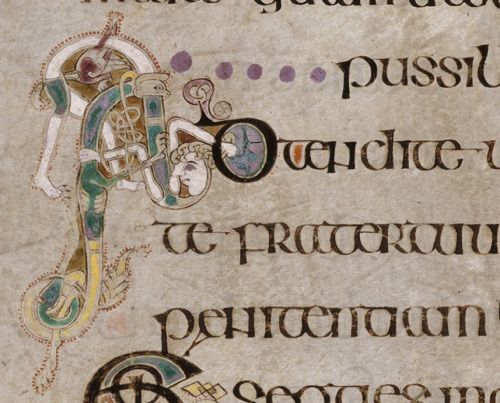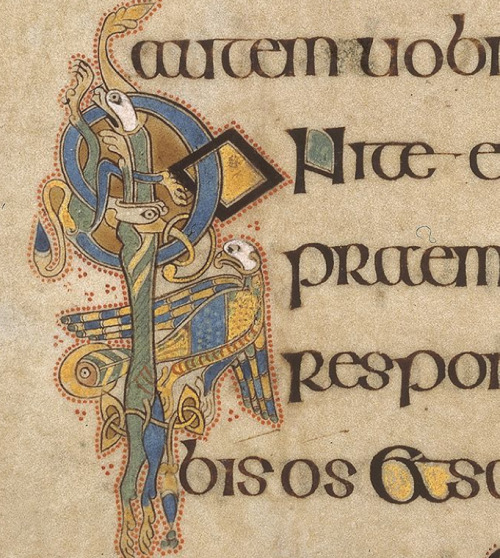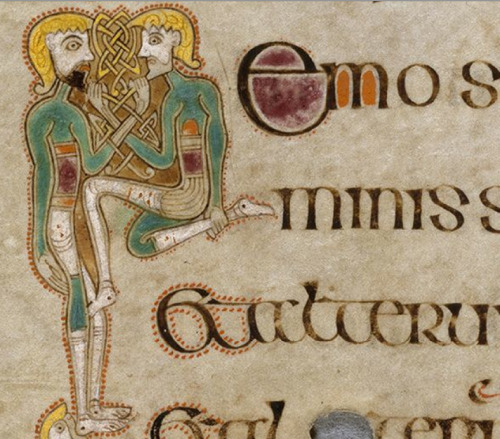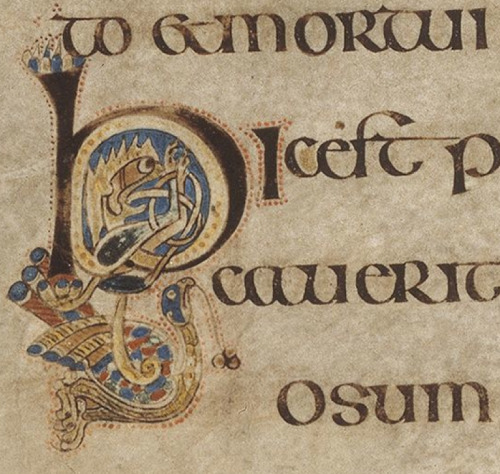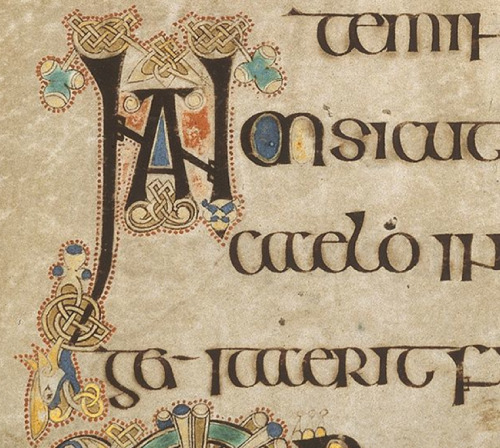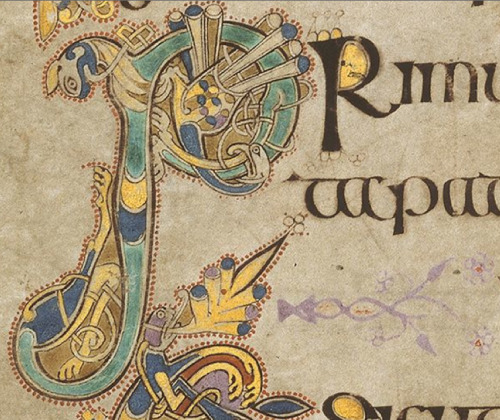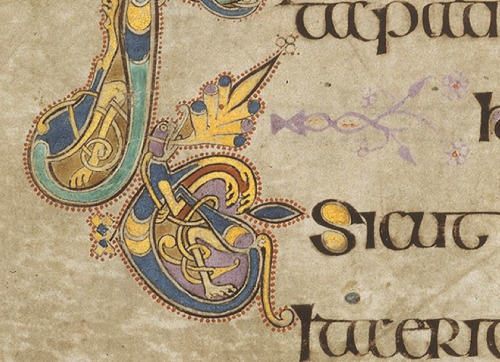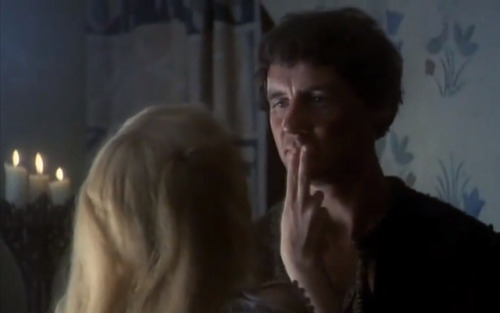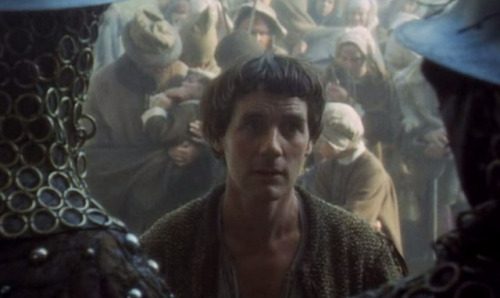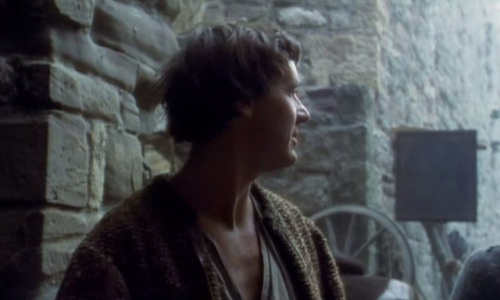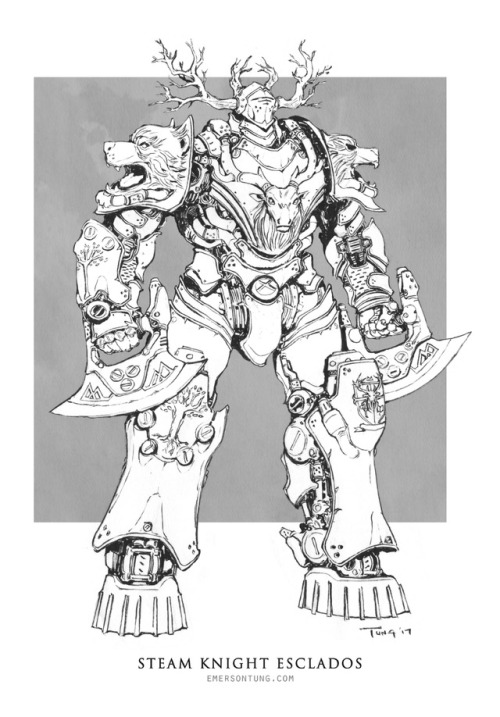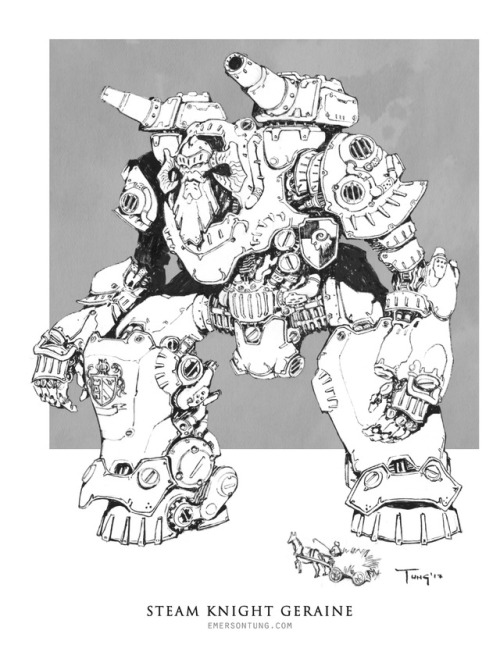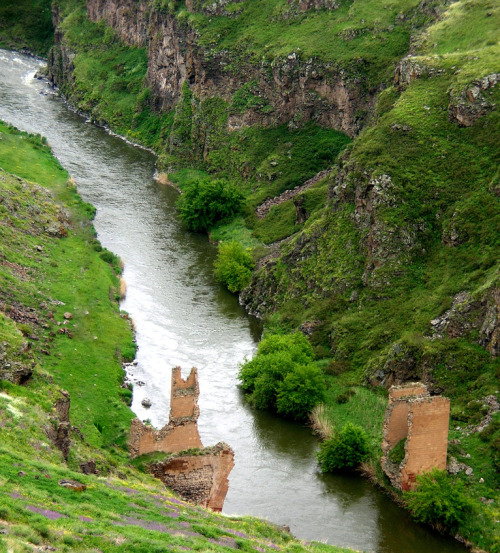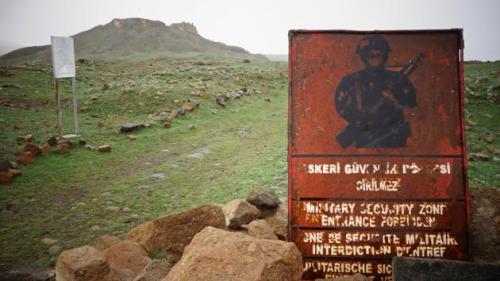#dark ages
Brass processional crosses (circa. 1100s-1400s) made to be held by monks and priests in ecclesiastical ceremonies.
All of them found at different monasteries in Ethiopia and currently on view at the Walters Museum in Baltimore.
Notice the details- are those animals? people? biblical allusions perhaps?
Notice how the structure and intricate designs on each cross both differ and are alike- maybe there is more to the interlace and shapes than one may expect.
Post link
These two bronze coins are thefinal evidence of the political history of Axum; nothing remains that documents any subsequent kings.
They were minted by King Armah of Axum in the early 600s AD, and are held at the British Museum.
The decline of the Kingdom of Axum can be seen in several details on the coin:
(1) the material of the coin is bronze, rather than gold or silver, meaning that it was meant for local circulation,
(2) the inscription, although attempting to mimic Greek sayings (“Let gladness be to the peoples”), is written in Ge'ez rather than Greek, so that only a local audience could understand it, and
(3) the cross-topped arch on the reverse of the second coin is, according to one theory, a representation of the Holy Sepulcher; a reference to the Arab conquest of Jerusalem in 637.
Was the emphasis on Christianity in the coins’ iconography meant to invigorate Axum’s sense of identity in the face of defeat?
Was the (possible) reference to the conquest of Jerusalem meant to display Axum’s friendship and subservience to the new Rashidun Caliphate?
Post link
These are two illuminated gospel books were made between 300-700 AD at Abba Garima Monastery in Ethiopia.
The Garima Gospels contain twenty eight full-page illuminations; each one bursting with color. The remarkably extant book covers are decorated with gold, silver, and holes where gems had been placed.
According to the oral history of the monastery, the manuscripts were scribed and illustrated by Abba Garima himself in the 490s AD. Thus, the Garima Gospels were acknowledged by the monks as being extremely old and religiously valuable.
The handful of Western scholars who managed to venture to Abba Garima Monastery upon their inspection of the manuscripts suspected some Mediterranean influence, but concluded that the illuminations were within a firmly conventional and uninteresting style of 12th-14th century Ethiopian painting.
It was not until 2000, when the French scholar Jaques Mercier brought fragments of the manuscripts’ parchment to Oxford University for radiocarbon dating, that the Garima Gospels were pushed into the international spotlight as one of the oldest (and most well preserved) illuminated gospel books.
Now, the Garima Gospels are considered one of the artistic wonders of the world: a priceless treasure from the ancient world preserved in the most unlikely of places.
The difficulty of actually seeing these extraordinary manuscripts–many of them are hoarded away in the mountain monasteries of Ethiopia–has kept the art historical community from bringing to light what could be a vast and beautiful strain of Late Antique painted religious books.
Additionally, it was not until scholars found a possible connection that the manuscripts shared with the “Western tradition” that they decided it was worthy of actually being looked at!
The Garima Gospels are both heartening and frustrating in this regard…
Post link
A 6th century monastery situated atop Debre Damo mountain near Adigrat, Ethiopia.
Basilica-type monasteries such as the one at Debre Damo can be found throughout the highlands of Ethiopia, serving as a spiritual escape for Ethiopian Orthodox monks from the worldly pleasures and burdens of society.
Many of these religious enclaves were established by Byzantine holy men fleeing religious persecution in the Mediterranean world by traveling south to the the royal court at Axum.
Original materials preserved since the monastery was built 1,500 years ago include wood and limestone bricks, carved wood ceiling panels with images of animals, and Axumite relics (including manuscripts).
British architect D.H. Matthews led the restoration of the monastery in the 1950s.
Painted icons were presumably made within the past 200 years. Unfortunately, very little information about the objects held in the monastery at Debre Damo are available online.
Post link
The stelae field at Tutu Fella, Ethiopia, is a 9th-14th century graveyard filled with one hundred and thirty rounded stone columns–each with linear or anthropomorphic carvings–that mark the burial sites of local aristocrats (and supposedly commemorate the reigns of local rulers).
Post link
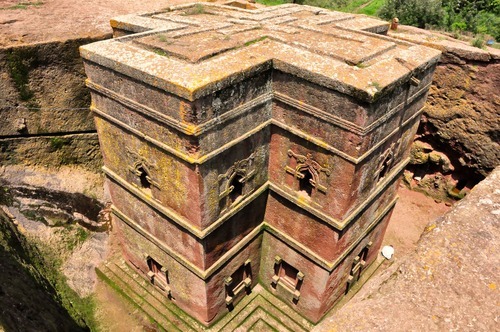
Axum, an ancient city state located in Ethiopia, holds the status of a glorified footnote in contemporary Medieval scholarship.
A powerful sub-Saharan civilization swept into oblivion by modern prejudices, merited only for adopting Christianity at a relatively early date (4th c).
For the month of August, I’m going to examine the various material remnants of the Axumite Empire and its legacy in the Ethiopian Orthodox Church.

Destruction caused by raids and economic decline has left the quantity of book and icon painting to be lacking during the period covered in this blog, so I’m going to make an exception and include works up until the 17th century so as to illustrate the vibrant breadth of Ethiopian ecclesiastical art.
map of the Axumite Empire:
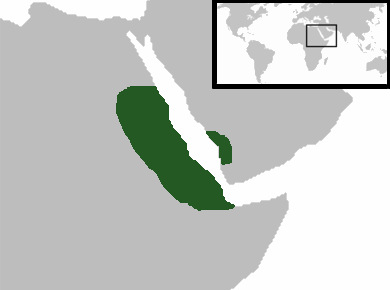
http://en.wikipedia.org/wiki/Kingdom_of_Axum
***I wrote a research paper on the genre of Ethiopian battle paintings in the 20th century, and that is about the extent of my expertise on Ethiopian art. If anyone would like to contribute/correct my errors, they would be most welcome to do so!***
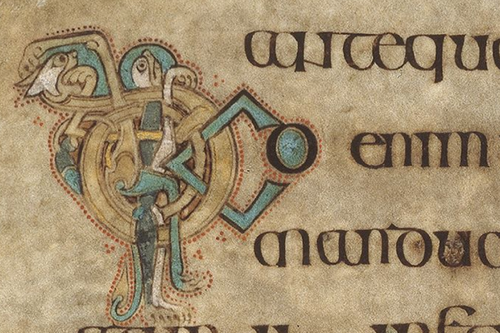
I really enjoyed looking up these manuscripts, and if you have any comments, questions, or observations please do not hesitate to message me.
My own conclusion about these letters is that the Frankish, Celtic, and Anglo-Saxon monks who painted them were seeking to add worldly value (via common metalworking designs) to a spiritually empowering objects (the manuscripts).
For the next Theme of the Month, we’re going to go down south to Ethiopia…
Bamberg Apocalypse (early 11th century) f.19v Manuscript created @ Reichenau island, Germany. (Revelations 8:1-5) Se7en Angels with the Trumpets of The Most High, Angel at the Altar with Golden Censer containing Prayers of Saints.
Post link
Palin, as Dennis Cooper in Gilliam’s hilarious and absurd Jabberwocky (1977)
+ a signed photo for Terry, from ‘Michael Dennis Palin - Peasant of the Year’
…which is also funny, considering the MP & The Holy Grailreference.
Post link
As a very serious adult, with a respectable career and life, and a healthy ability to let petty shit slide, I spent much too much time last week arguing with strangers on the internet who believe in the myth of the Dark Ages.
The arguments in question focused on a massively inaccurate meme, which some observers of the group pointed out was originally supposed to be about knowledge loss after the burning of the Library of Alexandria, but which some very cool EDGE LORD had changed to be about ‘The Christian Dark Ages’. Please feast your eyes on it in all it’s massive wrongness:
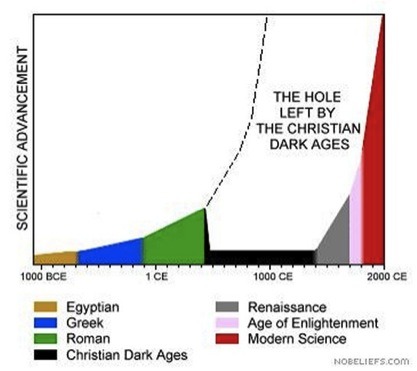
This is, pretty obviously, a bunch of honkey bullshit and also massively incorrect, as many important scholars have noted. As a result, I spent hours of my life – which I will never get back - pointing out repeatedly that the ‘graph’ in question has nothing to do with reality, and arguing with non-experts about the medieval period.
For the most part – these people were well-meaning. Many pointed out that this was a very Euro-centric world view, and that Asia, Africa, and the Arab world were all making huge advancements in scientific and medical theory at this time. That is absolutely true. White people have never been the entire world. The Chinese had a massively advanced scientific culture by this time, for example, and had been holding it down with hermetically sealed research laboratories since the third century BCE. The Arab world, meanwhile was compiling treatises on eye surgery. Scientific advancement was something that was happening in this period. Europe is not the centre of the world.
Having said that, while it is important to acknowledge that the-rest-of-the-world was making huge strides in scientific advancement during this time, and that Europe and white people are not the entire world, nor responsible for all of human advancement, there was no such thing as the Dark Ages in Europe either.
While everything about the idea of the Dark Ages is incorrect, lets start off with the way the term was meant to be used. The totally ignorant graph above, unsurprisingly, is completely fucking off. Hilariously, the idea of the ‘Dark Ages’ actually originated in the medieval period itself. Petrarch – the poet laureate of fourteenth-century Rome - was actually the originator of the idea that there was a period of stagnation that Europe was moving out of. Petrarch had a political axe to grind. He considered that any point at which Rome – where he lived and worked and had considerable sway – did not completely dominate the world was a BAD TIME. This is not an unbiased assessment of world history.
The actual phrase ‘Dark Ages’ itself derives from the Latin saeculum obscurum, which Caesar Baronius – a cardinal and Church historian - came up with around 1602. He applied the term exclusively to the tenth and eleventh centuries. However, and very significantly in his use of the term, Baronius was not decrying a state of scientific malaise, or a particularly turbulent political period – he’s talking about a lack of sources surviving from that time. Indeed, Baronius sees the cut off point for the dark ages to be the Gregorian reforms of 1046, following which we see a massive increase in surviving documentation. Witness an actual useful chart:
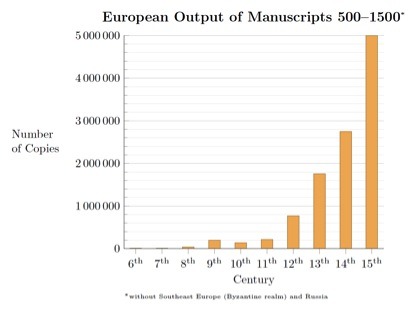
When we move into a period where there are more texts to be considered, Baronius argues, Europe moved out of the period of darkness and into a ‘new age’.*
Now this is some real talk. As you can tell from that graph, during the Carolingian Renaissance of the ninth century, we see a flurry of Latin writers emerge, and a lot of text copying. This drops off again until what we term the Twelfth-Century Renaissance – home to this blog’s favourite philosopher/proto-Kanye – Abelard. (Shout out to my boy.) However, when people use the term ‘Dark Ages’ now, they usually use it to talk about the entire millennium of the Medieval period, and they aren’t talking about source survival. They aren’t thinking ‘dark’ as in ‘occluded’, they are thinking ‘dark’ as in pejorative.
We can thank the Enlightenment historiography for the expansion of the idea that the medieval period was a bad dark time. KantandVoltaire in particular liked to see themselves as a part of an ‘Age of Reason’ as opposed to what they saw as the ‘Age of Faith’ of the medieval period. To their way of thinking, any time that the Church was in power was a time of regressive thinking. The Middle Ages, then, was a dark time because it was so dominated by religion.
The first push back against the term dark ages began with the Romantics. After the, um, unpleasantness of the Reign of Terror, and the major cultural and environmental upheavals of the Industrial Revolution it became fashionable to look at the medieval period as a time of spiritual focus, and environmental purity. Obviously this is a super-biased way of looking at the period – just like it was biased for Enlightenment thinkers to take one look at the primacy of the Church and declare an entire millennium to be bad. I mean, really what the Romantics were doing was just casting shade on the Enlightenment historiography because they felt like it inevitably led to the guillotine. But what can you do?
By the twentieth century historians had moved on from the idea pretty much completely. If you take the time to actually, you know, study the medieval period, it becomes very apparent very quickly that there was a tremendous amount of intensive thought happening. This is the era of Thomas Aquinas – a bad ass philosopher who will think you under the fucking table. Of Hildegard of Bingen – who basically founded scientific natural history in the German speaking lands. Hell, like we talked about last week Rogerius and Giles of Corbeil were throwing it down for major medical advancement. There was a lot going on. On the real, without the contributions of medieval thinkers you would not get Galileo, Newton, or the Scientific Revolution. The medieval period was not a period of stagnation, it was a time of progress.
But it’s not just that the idea of a ‘Dark Ages’ makes no sense when you look at what incredible advancement was happening at the time, it also makes no sense because it implies that stuff was going really well under the Romans. We estimate that somewhere between thirty to forty percent of the population of Italian Rome were slaves. The Romans had total bans on human dissection, meaning that there was no real way for medicine to progress any further than it had by the time of collapse – a problem that medieval people didn’t have. I mean even if you just want to make it about religion - the Roman Empire was Christian at the time of its collapse and had its heads of state worshipped as LITERAL GODS during the pagan era. Somehow every edgy motherfucker with a fedora is totally cool with this and thinks it is super reasonable though. Because ¯\_(ツ)_/¯. The Romans were not a bunch of really awesome people living a life of idealised rationality any more than medieval people were all ignorant savages living in fear of God.
Is there a time that historians use the term ‘Dark Ages’? Yeah, we do use it to talk about source survival rates. It’s not a term we use as a value judgment, however. We just mean that we don’t have a lot of evidence to go off of. By the same token – if we somehow move on to another electronic format without converting the way things are stored now, we could be moving into a theoretical Digital Dark Age, where historians in the future won’t be able to study what we are writing now. (And that would be a tragedy, because legit, I would killto be a historian working on Donald Trump’s tweets in the year 2717.)
We’re now moving away from using the term Dark Ages at all, however, because of the frequency with which it is misinterpreted. I mean, if every basic motherfucker out there who never bothered to read God’s Philosophers (hat tip to James Hamman – this book is amazing) will insist on willfully misinterpreting us, we just ain’t gonna give them the ammo.
What it comes down to is that the medieval period was as vibrant as any other period of history. If you’re going to player hate, go ahead, but please don’t act like you know anything about either medieval or ancient history when you do. There is no period of rational supermen followed by ignorant monsters. There are just people doing their best in the circumstances.
* Caesar Baronius, Annales Ecclesiastici Vol. X. (Rome, 1602), p. 647. “Novum incohatur saeculum quod, sua asperitate ac boni sterilitate ferreum, malique exudantis deformitate plumbeum, atque inopia scriptorum, appellari consuevit obscurum.”
Take me back to the Vikings and Valkyries Armidale is Australia’s biggest Dark Ages reenacment event, in which there is no general public and it was my first ever strictly Viking / Dark Ages event.
Post link
Scanned, cleaned up and added a flat background to all my Inktober pieces this year. Cool to see all the Steam Knights together in one place. Which Steam Knight is your fav? #inktober#inktober2017
Get my artbook Super Robot Bomber here: http://emersontung.bigcartel.com/product/super-robot-bomber
Post link
We have been consumed in the flames of the false God in dark times gone by, but we rise as the phoenix once more to avenge its Church, for fire is what gives us birth, the fire is what our Souls are made of, what lies at the core of being ~ it cannot destroy us only free us, it cannot burn the fire within us which is greater than all fires, for it is the Black Flame of Satan which drives us!
The fires you cast us upon - followers of the Church of Decay - were no more than portals by which we returned to Hell and grew stronger, and now we have returned it is you who shall burn Prophets and Priests of the Lie, for we have gained ascendance and returned for the time of the Rapture of Vengeance and the skies shall bleed tears at our actions!
Copyright© John Wakewood August 2017

The bridge over the Akhurian river, flowing from Arpi lake dates either from the tenth century or thirteenth century. It is a good example of medieval Armenian architecture and engineering. The bridge’s single arch which spanned over thirty metres has fallen due to neglect and war during the Ottoman empire. Only the tall bridge endings have remained which were possibly part of a fortified gate. Nineteenth century traveller reported a gaurdhouse next to the bridge, but this aswell has now vanished. This medieval bridge in the ruined medieval Armenian capital Ani. Ani stood on various trade routes and its many religious buildings, palaces, and fortifications were amongst the most technically and artistically advanced structures in the world.
Next to the bridge is the Monastery of the Virgins. A small monastery from the eleventh century that stands on a rocky hill, isolated from the rest of the city and overlooking the Akhurian bridge. It was named after the virgin martyrs of Saint Hripsime, and may have contained a community of nuns.
Bordering the enclosure of the wall is a long and spacious stairway with a vaulted roof, partly cut into the natural rock. It leads down to the Akhurian river. It most likely contained a roadway leading to the bridge. In the valley below the Monastery of the Virgins are various structures. These include a tiny, single naved chapel and a rectangular structure. This may have been a watchtower to control movement along the river bank. Like most ancient and medieval Armenian sites within current Turkish borders, the bridge is off limits to any visitors, therefore much information and research is missing. Several medieval bridges once existed over the Akhurian River.
Post link

